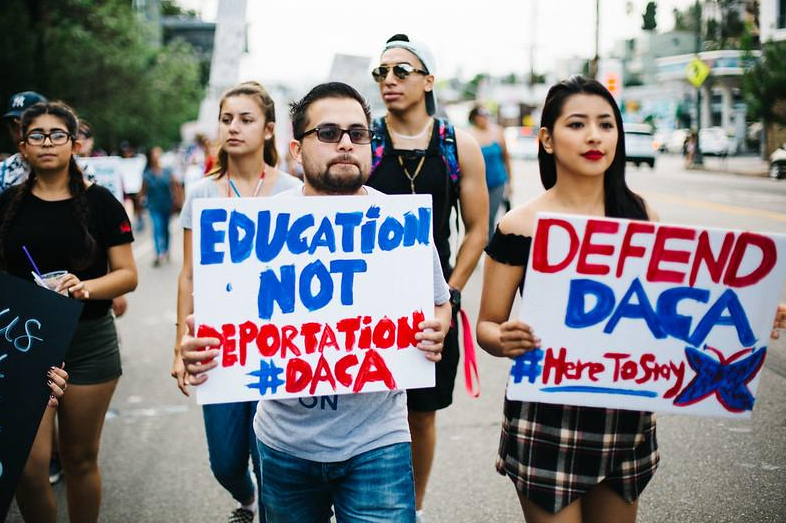

All eyes are on the U.S. Supreme Court as it weighs whether to preserve an Obama-era program that protected undocumented youth and young adults from deportation. In this installment of Word on the Beat, we examine the history of the DACA program, its legacy, and the significant implications the pending legal ruling could have on students, families and schools from K-12 through higher education.
Word on the Beat: DACA (Deferred Action for Childhood Arrivals).
What it means: In 2012, the Obama administration unveiled a new immigration policy offering a path to temporary legal residency for individuals who had been brought illegally into the United States as children. An estimated 1.3 million teens and young adults under age 31 were given a route to stay in the country to work or attend school, for up to two-year renewable terms. To qualify, an individual had to either be in school or have graduated high school, with no record of serious criminal behavior. While DACA was a stopgap measure rather than a path to full citizenship (unlike the long-stalled DREAM Act), close to 700,000 individuals are benefitting from its protections. While Congress spent the next five years sparring over competing plans to offer undocumented immigrants a path to legal citizenship, President Trump in 2017 rescinded DACA, closing the door to new applications.
Who’s talking about it: Just about everyone. The U.S. Supreme Court heard oral arguments this week as it considers multiple cases that have been consolidated into one challenge of President Trump’s decision to end the program, which left hundreds of thousands of individuals at risk of deportation when their existing permits expire. Among those seeking to reinstate the program: Princeton University, on behalf of its student María Perales Sánchez of Baltimore. Trump officials contend they had the legal authority to end DACA because it was an unlawful program from the outset. The conservative majority of Supreme Court justices seem inclined to let Trump end DACA, The New York Times reported.
Why it matters: DACA has been an essential program for students, families and educators at all levels of public education. Tens of thousands of adults working in K-12 schools are DACA recipients, including teachers in high-need subjects such as English as a second language. A recent report by the left-leaning Migration Policy Institute concluded that 100,000 undocumented students graduate from U.S. high schools each year. Additionally, many college students are DACA recipients. MPI estimates that nearly a quarter of a million DACA- eligible youth were enrolled in U.S. postsecondary institutions in 2014, the most recent year for which data is available. Some higher education leaders have been vocal about the need to preserve the program, going so far as to establish so-called “sanctuary campuses,” although that is more symbolic support than a legal protection. Similarly, the National Education Association offers an open-source template for declaring K-12 campuses “Safe Zones.” More than 100 school districts nationwide have adopted the NEA’s resolution, which includes a pledge to protect students’ rights and privacy. And in Texas, the IDEA charter schools network has taken extra steps to help families and DACA-eligible staff members that are facing deportation.
Want to know more? Writing for Education Week, Mark Walsh explains why the implications of the Supreme Court ruling “will be enormous” for public education, if hundreds of thousands of individuals are stripped of the protections that allow them “to attend school, work, or obtain a driver’s license.” Astrid Galvin of the Associated Press looked at how DACA recipients in their 30s have become particularly in their American lives. And Vox offers three ways the Supreme Court could decide the case.
In a webinar last year, EWA focused on Deciphering DACA, with insights from legal experts and experienced reporters. At EWA’s 2017 Higher Education Seminar, we explored how journalists can effectively cover DREAMers during this turbulent period. You can read the write-up from that session here. (At the same event we also heard from Jose Antonio Vargas, a journalist who “came out” as an undocumented immigrant in 2011.) And at our 2017 National Seminar, we discussed the mixed messages being sent to DREAMers as a result of the political turmoil. And Corey Mitchell of Education Week joined the EWA Radio podcast to discuss the potential fallout at the K-12 level if DACA comes to an end.
“Word on the Beat” is a regular feature of The Educated Reporter. And the posts are updated periodically to reflect current events. Send your suggestions to erichmond@ewa.org
